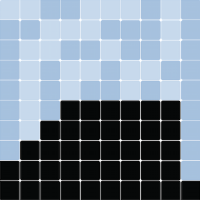mesa.visualization.modules package#
Submodules#
mesa.visualization.modules.BarChartVisualization module#
Pie Chart Module#
Module for drawing live-updating bar charts using d3.js
mesa.visualization.modules.CanvasGridVisualization module#
Modular Canvas Rendering#
Module for visualizing model objects in grid cells.
mesa.visualization.modules.ChartVisualization module#
Chart Module#
Module for drawing live-updating line charts using Charts.js
mesa.visualization.modules.HexGridVisualization module#
Modular Canvas Rendering#
Module for visualizing model objects in hexagonal grid cells.
mesa.visualization.modules.NetworkVisualization module#
Network Visualization Module#
Module for rendering the network, using [d3.js](https://d3js.org/) framework.
mesa.visualization.modules.PieChartVisualization module#
Pie Chart Module#
Module for drawing live-updating pie charts using d3.js
